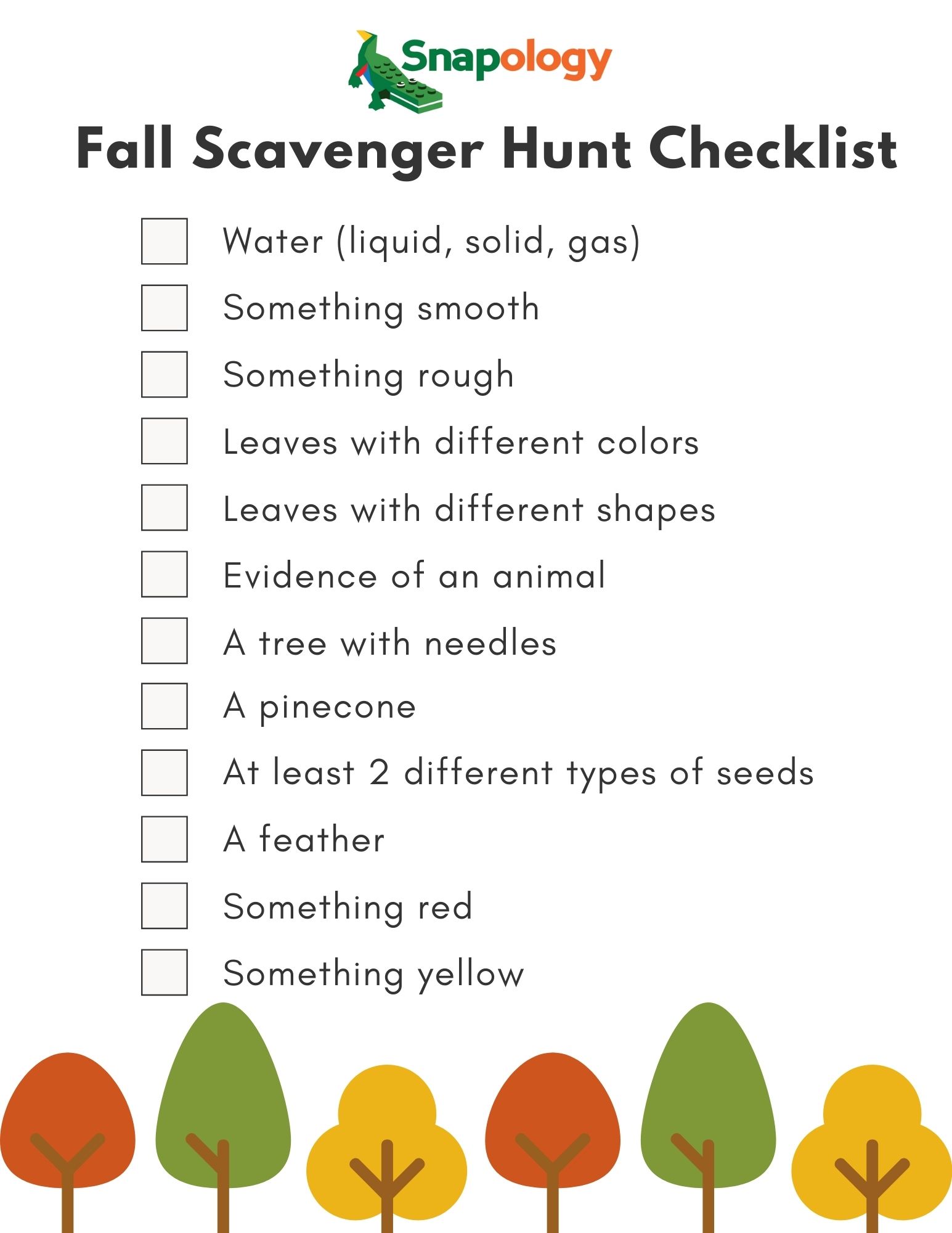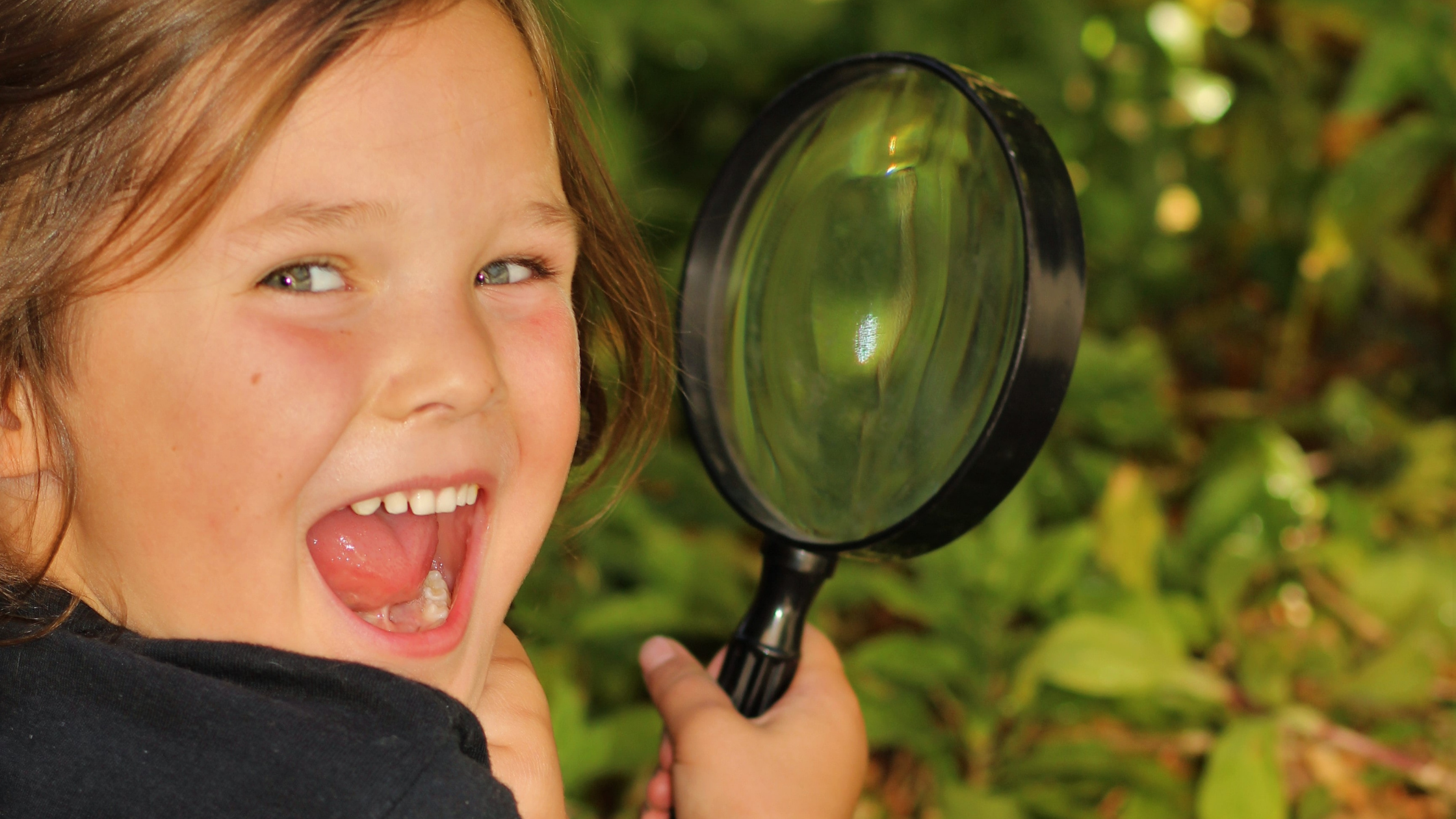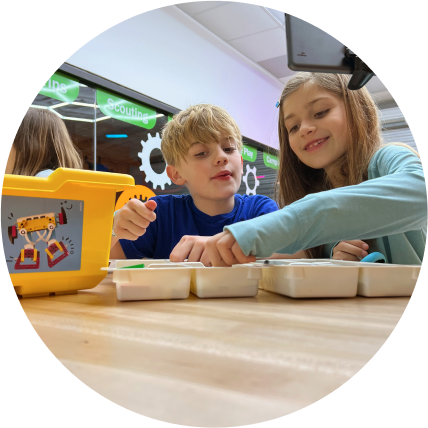Fall is a great opportunity for kids to experience science in a hands-on, interactive way. Children benefit most from hands-on learning because it encourages them to observe, ask questions, make connections, and experiment. Celebrating our children’s natural curiosity will do wonders for their interest and involvement in STEM subjects and the complex problems they’ll face in the classroom.
Try incorporating some informal, hands-on science fun into your household with family games, household or backyard experiments, and seasonal walks like this fall scavenger hunt! We’ve included some questions and lesson prompts to share with your little scientists along the way.
No materials are needed to complete the scavenger hunt, but feel free to bring any of the following items to make your walk more interactive: plastic baggies for collecting items, some paper and a pencil or crayons for leaf tracings/etchings, a magnifying glass.
Fall Scavenger Hunt
- Water – Hint: This could be in the form of liquid, solid, or gas depending on your environment and the time of day that you take your walk
- Something smooth
- Something rough
- Leaves with different colors – Lesson prompt: Why do leaves change colors? Leaves contain something called chlorophyll. Chlorophyll is the same chemical that makes leaves green. Chlorophyll helps plants make energy from sunlight, a process called photosynthesis. As the days get shorter and the weather gets colder, leaves receive the signal to stop producing chlorophyll and begin using up their stores that they’ve been building all spring and summer long. As the leaves use up their stores, their green color begins to fade and the colors beneath show through – those are the reds, oranges, and yellows that we see. Eventually the leaves turn brown and fall after they’ve finished their dramatic color show.
- Leaves with different shapes – Try finding as many different leaf shapes along your walk as you can. You can turn this into a matching game as your walk continues. When you get home, look up the types of leaves you found and identify which trees they came from. Have the kids trace the different leaves and create colorful mosaics out of scrap or tissue paper.
- Evidence of an animal
- A tree with needles – Lesson Prompt: You may notice that some trees have prickly needles instead of the flat leaves of deciduous trees. Needles do the same work as the broad, flat leaves of other trees by capturing sunlight, breathing in carbon dioxide and breathing out oxygen. Needles offer a few advantages in certain areas in terms of weather resistance and water retention. Needles are tough for animals to chew through and are generally hardier which means they will survive cold, harsh weather without falling off and keep the tree stable and hydrated all year long.
- A pinecone
- At least 2 different types of seeds – How many different seeds can you find along your walk? Which is the biggest and smallest? If you’re having a hard time finding seeds, look beneath trees. What are some similarities with different seeds and what are some differences? How do you think seeds are replanted?
- A feather – Lesson prompt: Why do birds migrate? The majority of birds migrate south from northern areas to southern areas. They do this for a few reasons. Birds move from areas of dwindling resources to areas where food can be found year-round. They are also looking for ideal conditions to raise their families. Birds will travel very far distances to find ideal environments to mate and raise their young. As they travel south, there is more food to go around and less competition with other birds.
- Something red
- Something yellow



